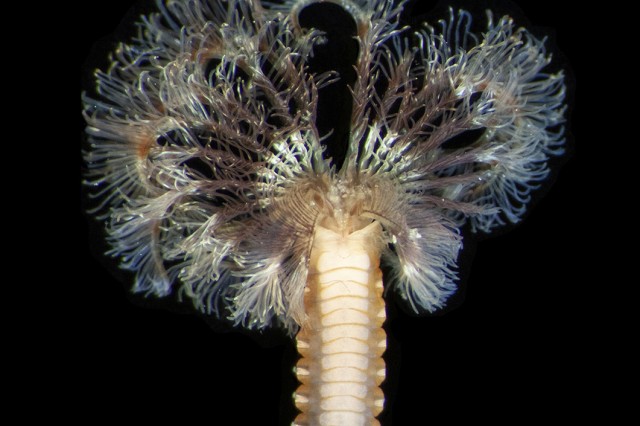The Ancient Odyssey of Crabs
An international team of scientists including NHM researchers chart crabs' sideways path from the ocean to dry land—a journey they've made at least 17 times since the Triassic.

Published November 29, 2023
In a groundbreaking study, an international team of researchers—including NHM curators and project managers— found that true crabs (Brachyura) left the marine environment behind as many as 17 times—and returned to the oceans at least two-to-three times. They also found that true crabs diverged from their ancestors 45 million years earlier than previously thought, emerging alongside some of the earliest dinosaurs.
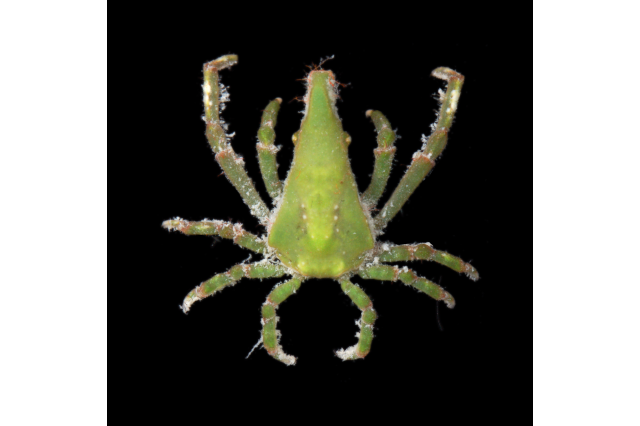
Photo by Jody Martin
True crabs (Brachyura) are found in oceans all over the planet, as well as on land and in freshwater environments, and this multiplicity of lifestyles is reflected in wildly different shapes, colors, and sizes like this green Huenia crab (commonly called an arrowhead crab for obvious reasons) found in the Indo-Pacific. Its distinct coloration and shape helps it blend in with the underwater greenery.
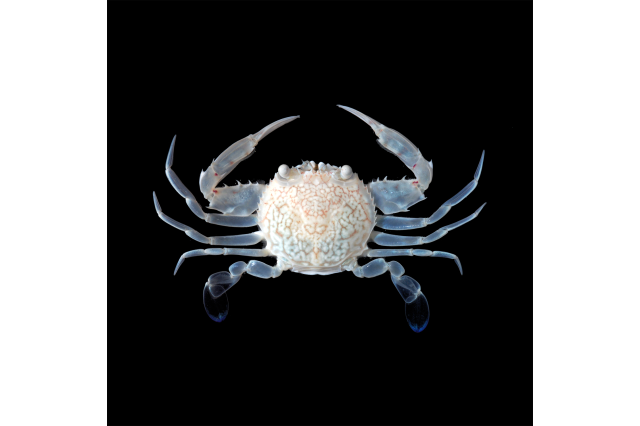
Photo by Jody Martin
This ghostly crab from the family Portunidae is a swimming crab. Notice their flat, paddle-like last set of legs. These are called swimmerets, adaptations that help them swim backward and forward.
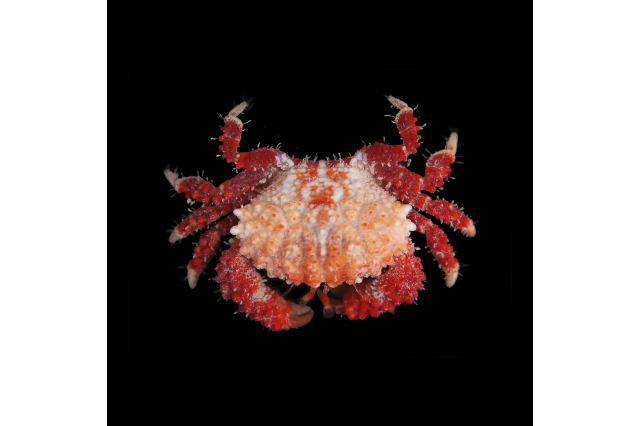
Photo by Jody Martin
The vivid red legs and claws and spiky exoskeleton of this crab from the xanthid genus Epiactaea make a serious impression.
1 of 1
True crabs (Brachyura) are found in oceans all over the planet, as well as on land and in freshwater environments, and this multiplicity of lifestyles is reflected in wildly different shapes, colors, and sizes like this green Huenia crab (commonly called an arrowhead crab for obvious reasons) found in the Indo-Pacific. Its distinct coloration and shape helps it blend in with the underwater greenery.
Photo by Jody Martin
This ghostly crab from the family Portunidae is a swimming crab. Notice their flat, paddle-like last set of legs. These are called swimmerets, adaptations that help them swim backward and forward.
Photo by Jody Martin
The vivid red legs and claws and spiky exoskeleton of this crab from the xanthid genus Epiactaea make a serious impression.
Photo by Jody Martin
Fossil Collections Help Map the Journey of Modern Crab Species
The important study was able to redraw crabs’ paths from the water to the land and back again so many times by using digitized museum fossil collections. These fossil crab specimens allowed researchers to mark out the steps along the path from (and back to) life in the oceans by capturing evolutionary events and tying them to specific points and lengths of time in the past. This let the researchers anchor other information like genetics to make more extensive assumptions about how crabs transitioned from sea creatures to creatures you might see climbing a tree.
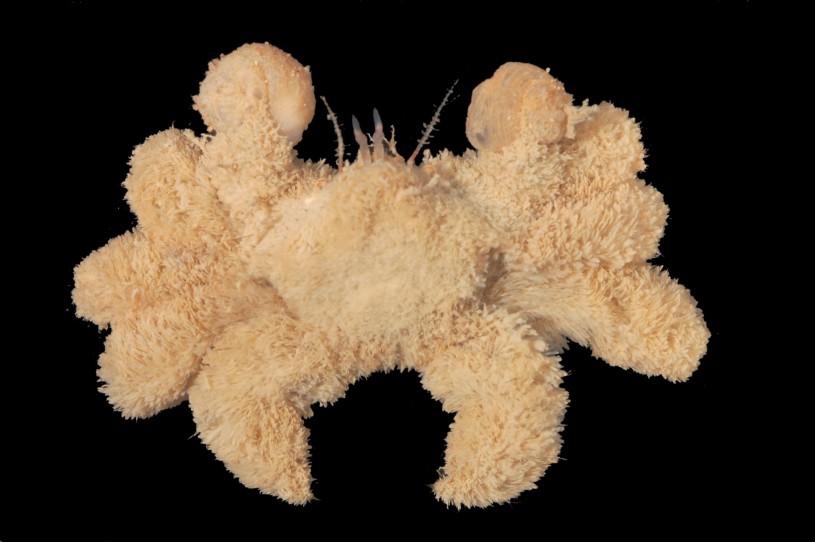
“As is true with so many studies of modern biodiversity, understanding the present requires a firm grasp of what has happened in the past. Fossils and their data quite often form the baseline that allows us to ask questions about the present and the future,” said Martin.
The researchers looked at DNA and RNA from 344 marine and non-marine species of true crabs to build a molecular phylogeny–an evolutionary family tree showing how closely each crab species is related on a genetic level. They also compiled information about how each species lived, natural history data like which type of habitat a crab preferred and what time of day they were most active, as well as aspects of morphology—like the structure of their gills or lungs (or both—we’re looking at you, fiddler crabs) or the shape of their setae (little hair-like structures) among others to grade each crab on how far along it was in the transition from ocean to land.
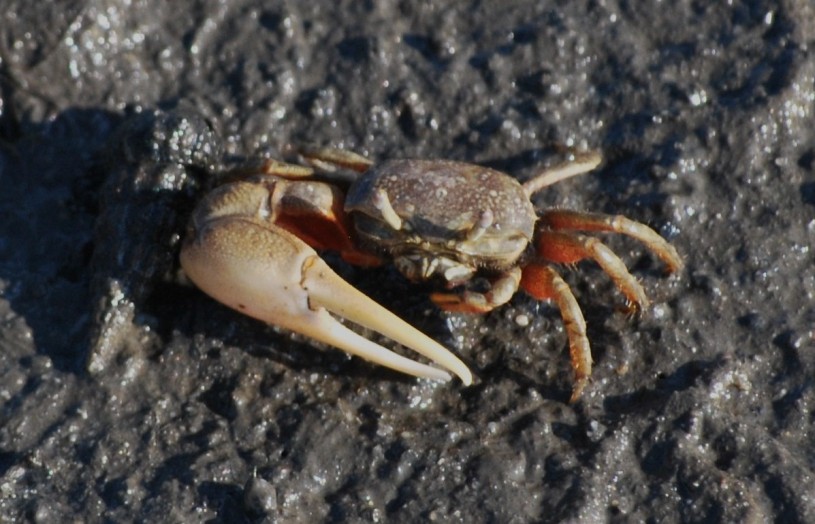
For most groups, the odyssey from the sea to land is shrouded in deep time, and typically viewed as a one-way trip. To chart crabs’ epic journey from the oceans, the team rebuilt the evolutionary family tree of true crabs from the roots up with three new massive datasets. NHM’s Curator of Crustacea Dr. Jody Martin, Marine Biodiversity Center Curator Dr. Regina Wetzer, and Diversity Initiative for the Southern California Ocean Program Manager Dean Pentcheffwere all co-authors on the study in Systematic Biology.
“Any truly large and comprehensive research paper requires the expertise and input of many different specialists and years of work. We are incredibly fortunate at NHM to have expertise in a wide range of fields of marine biodiversity, including of course, the wonderful crustaceans,” said Dr. Martin.
Crabwise Steps
The datasets revealed two main roads to life on land or terrestrialization. The more direct route takes a crab from the ocean, through intertidal zones to the beach, and then on to coastal forests and jungles. The less direct route takes a detour through river mouths and submerged freshwater and the banks of rivers before reaching coastal forests and jungles. And then at least two or three of them turned around.
This sideways movement uncovered by the study emphasizes that there is no end goal for evolution—crabs aren’t working their way to dry land (or vice versa) as part of some crab plan. The ecological niche that works for a land crab right now might not work in the future, and it may find itself back on the riverbank or beach, adapting once again.
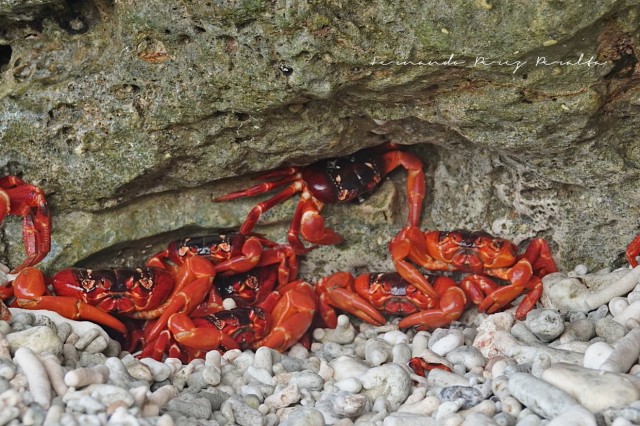
Christmas Island red crabs like these were graded as being on a direct marine transition pathway by the authors.
iNaturalist observation uploaded by user Fernando Pérez Peralta
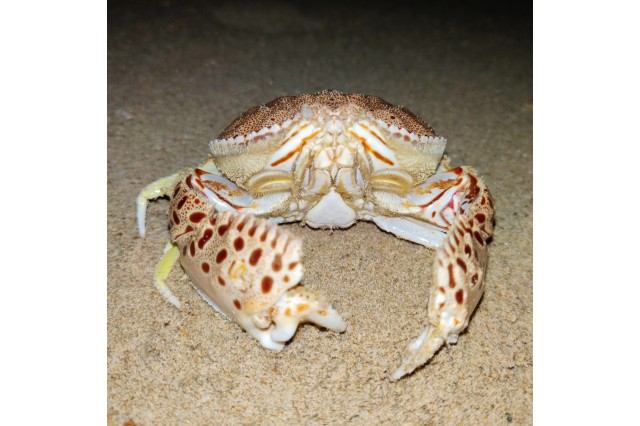
Box crabs like this were graded as living fully marine lifestyles by the authors.
Photo observation uploaded by iNaturalist user Snakey Danial
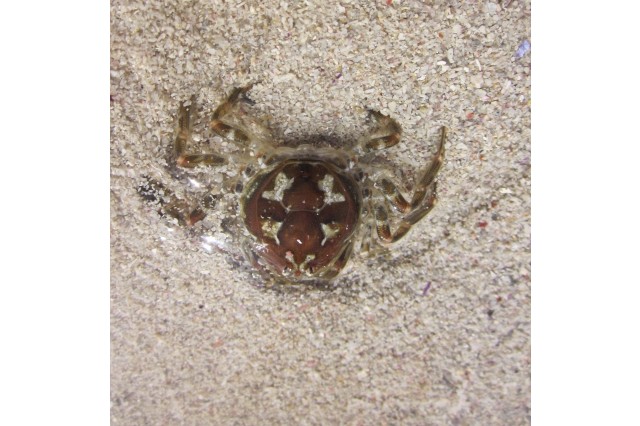
Crabs like this crown crab were graded as being on an indirect freshwater transition pathway by the authors.
Photo observation uploaded to iNaturalist by user flamelily
1 of 1
Christmas Island red crabs like these were graded as being on a direct marine transition pathway by the authors.
iNaturalist observation uploaded by user Fernando Pérez Peralta
Box crabs like this were graded as living fully marine lifestyles by the authors.
Photo observation uploaded by iNaturalist user Snakey Danial
Crabs like this crown crab were graded as being on an indirect freshwater transition pathway by the authors.
Photo observation uploaded to iNaturalist by user flamelily
“Studies like this one, covering hundreds of species and millions of years of evolution and connecting evolutionary pathways to ecological transitions across different habitats, would not be possible without the rich legacy of specimens and their data that are found in natural history museums around the world, including here in Los Angeles,” said Martin.
The results of this study make it easier for researchers to identify those adaptations at their earliest stages, and understanding how crabs have adapted could help scientists better understand how other groups make similar adaptations as they transition between habitats and cope with environmental change. As human-caused climate change accelerates, that understanding will only become more crucial.
